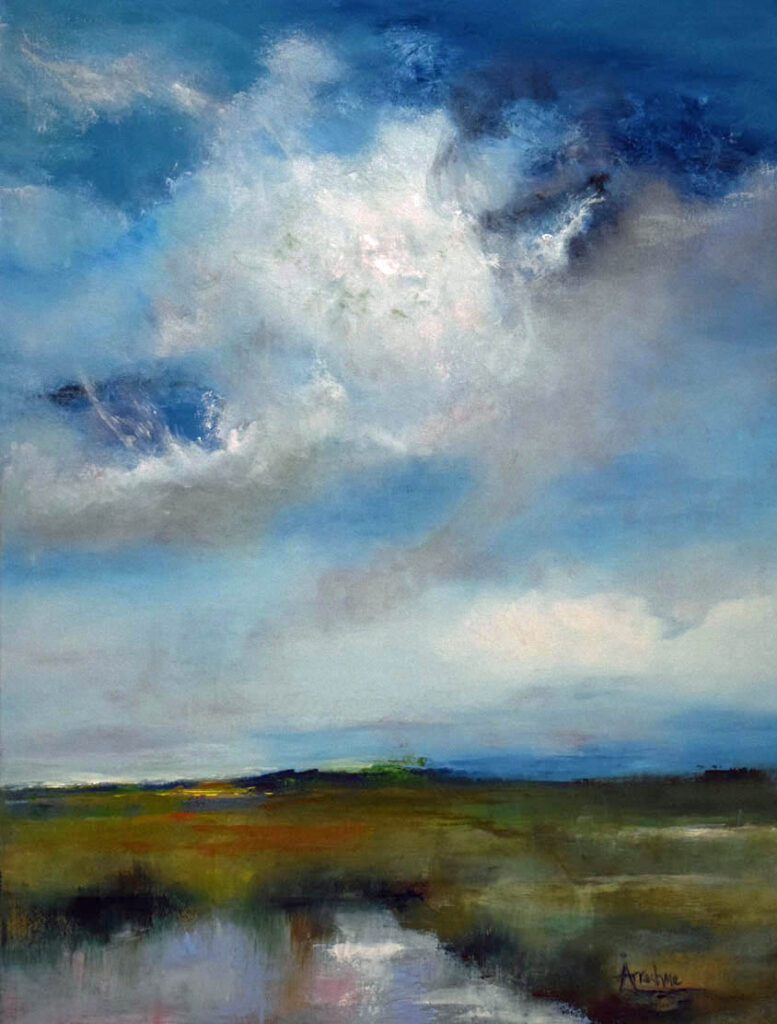Article #16 – What Is in A Name?
The Art Lady – Village Neighbors
How and why do artists sign their paintings? Do you wonder if the signature on a painting affects its value?
I can attest that a moniker makes the world of difference in art. For a few years, I signed my paintings with just initials. When I first arrived in The Villages, Florida, I laid low. No one knew who I was or what my experience was. I took a few art classes in a nearby city, incognito, mainly because I wanted peace and freedom to just sit quietly, unnoticed. I would sign my name with initials. The instructor was bubbly and cheerful which made attending her class enticing. Very rarely did any instructor say much about my work. One day an instructor looked at the initials that I carefully painted in the corner and quietly whispered the words, “What’s the matter, are you not proud of your work? Why are you not signing your name?” She was right! That moment was life-changing for me. I researched different ways to sign my name. My full first name became my signature as well as my brand due to its uniqueness. My career soared. Notoriety doubled than tripled, over and over. Who knew that a name could mean so much?
I am careful to spend time on my signature which happens sometime during the painting process. I do not always wait until the end. You can see my recent painting, Thoughts and Feeling, which resides in a South Korean Museum. Since I value it as part of the painting, the marks that form my name are subtly incorporated into the grass.
There are many ways a painting can be signed. Some artists autograph with their first name, last name, or both. Some even sign by painting an image. During your next trip to the Dali Museum in St. Petersburg, Florida, you will see that he sometimes used the name Dali but most interesting, sometimes he would paint an image of his likeness in the corner of the canvas. He created a painting within a painting, much like a commemorative stamp.
Our posed question is not without controversy. A few years ago, my husband and I were in Miami, Florida for Art Basel where I was regularly exhibiting. We ran into an art academic that was new to Miami with a few important letters behind her name from her studies at the Sorbonne. She was choosing artists for her new gallery. Her unique twist was to create a movement where the artists would not sign their names on the front of the canvas. I knew that this had been attempted once before in history but languished without success. She explained that she and her colleagues felt the artist’s name would take away from the beauty of the painting. Peter and I did not accept when she said this, rather we locked eyes with one of those, we’ll talk later looks. He then gently looked at the exit door which said to me, let’s see how fast we can make it outside without anyone noticing. Once in the car, we both chuckled spontaneously, “Can you imagine anyone telling Picasso, I don’t want you to put your name on the front of your painting.” We both agreed that everyone is entitled to their opinion. Agree or not, she deserved respect for acquiring her P.H.D. in Paris from the Sorbonne.
It seems to me that it affects the artist’s essential feeling of self-worth to sign their masterpieces, proudly. We think of important lost paintings that are emerging from prominent artists. When a signature is not present it complicates determining authenticity. After reading this article, it may be fun for you to go on a quest to explore how artists sign their work.

